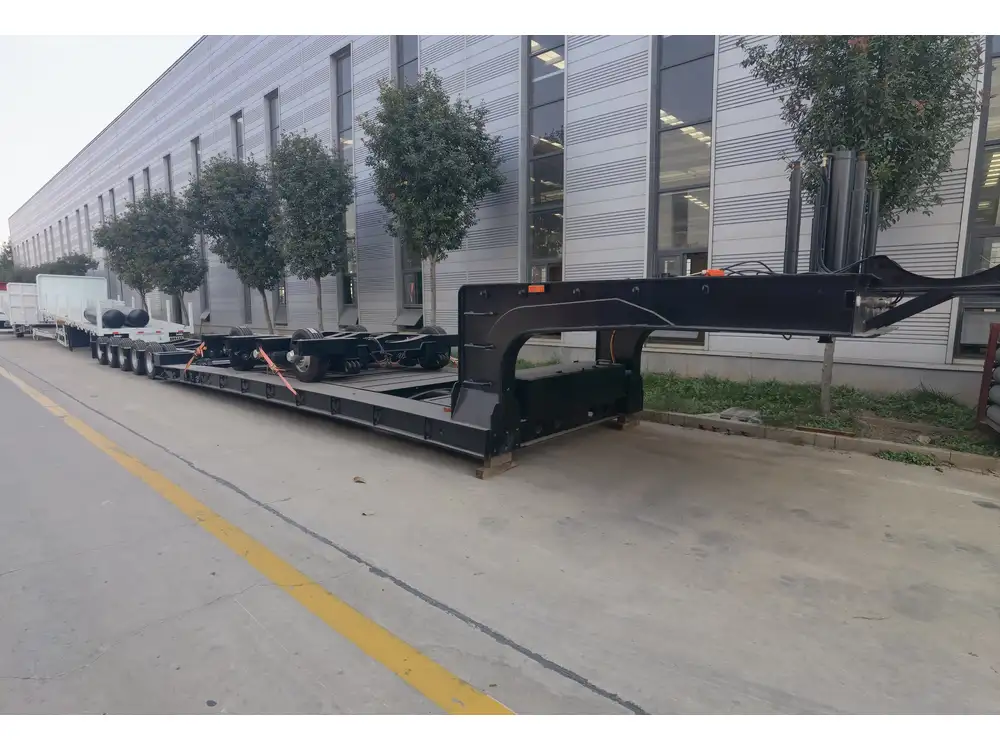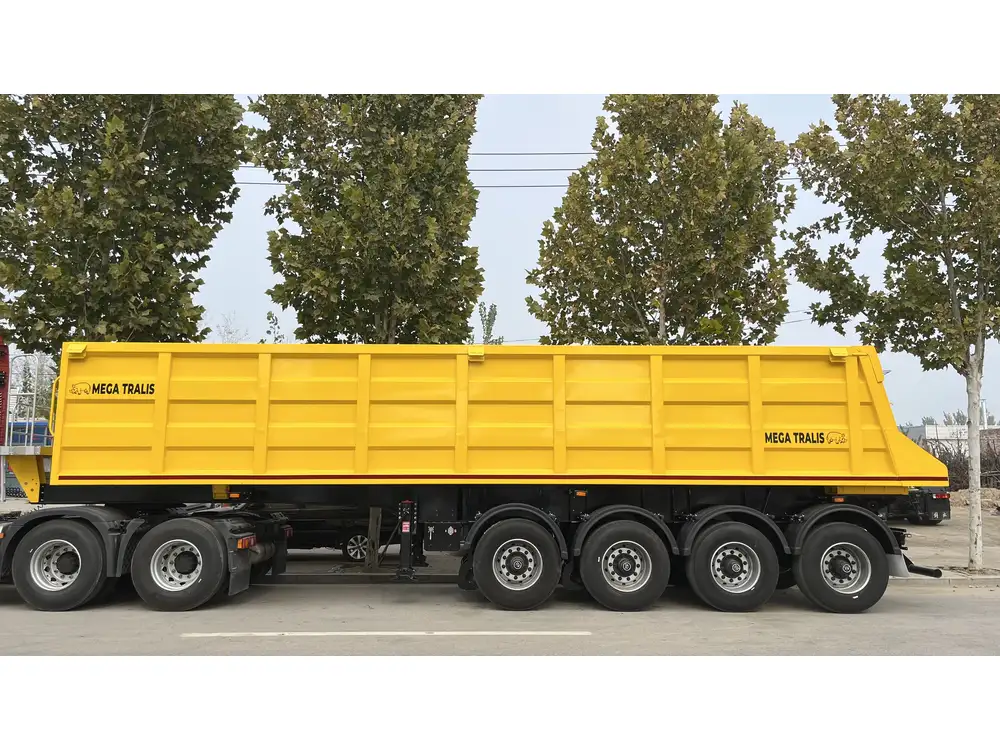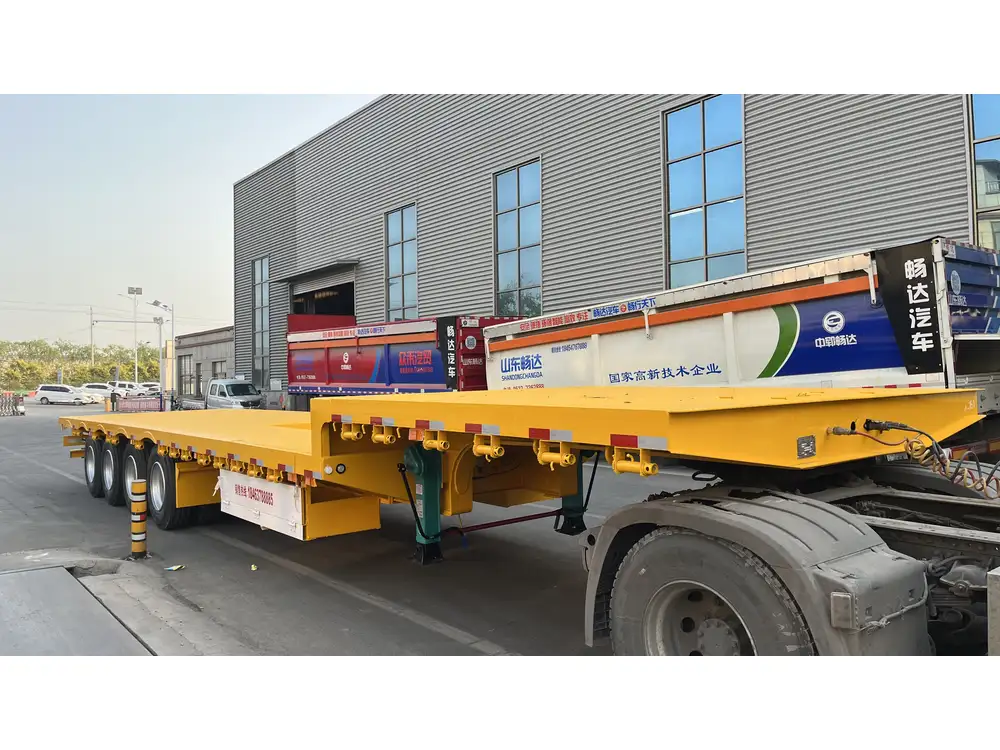Backing a semi-trailer straight is an essential skill for drivers in the transportation industry. While it may seem straightforward, the nuances involved in this task can pose challenges even for seasoned professionals. Understanding the dynamics of your vehicle and honing your skills can make all the difference. Here, we present a detailed guide to tackle this aspect of driving, enhancing both your confidence and efficiency on the road.
Understanding Your Vehicle
Importance of Familiarization
Before attempting to back a semi-trailer, it is crucial to understand the vehicle’s structure and dimensions. A semi-trailer consists of two primary components: the tractor (the front of the truck) and the trailer itself. Grasping the relationship between the two and how they maneuver is fundamental.
| Component | Description |
|---|---|
| Tractor | The front engine and cab part |
| Semi-Trailer | The cargo-carrying unit attached to the tractor |

Check Your Equipment
Regular maintenance of your semi-trailer ensures optimal performance. Before you attempt to back up, check the following:
- Tire conditions: Ensure that all tires are properly inflated and free of significant wear.
- Lights and signals: Make sure all lights, including brake lights and turn signals, are functional.
- Attachments: Verify that the trailer is securely attached to the tractor.
The Fundamentals of Straight-Line Backing
Setting the Scene
When backing a semi-trailer, the environment plays a crucial role. Evaluate the space where you will be maneuvering. Clear visibility is paramount—avoid backing up in areas with obstructed views.

Step-by-Step Approach
Implementing a structured approach can simplify the process of backing up. The following steps will guide you through straight-line backing:
Adjust Your Mirrors Properly
- Ensure that both side mirrors provide a clear view of the trailer’s position with respect to your surroundings.
Position Your Vehicle
- Align your tractor straight with the trailer, ensuring that they are both parallel to the spot into which you wish to back.
Use Your Hands
- Start with your hands on the steering wheel at the 10 and 2 positions (an equivalent to a clock).
- The direction you turn your hands is the direction the trailer will go. For example, if you want the trailer to move left, turn the steering wheel left.
Move In Reverse Slowly
- Engage the reverse gear and gently accelerate, allowing a controlled and gradual movement.
Monitor Your Trailer
- Keep an eye on the rear of the trailer. Ideally, use a spotter if available, or check your mirrors frequently to track the position of the trailer.
Adjust Speed and Steering
- If the trailer goes off track, make slight adjustments to your steering. Oversteering can lead to larger corrections that complicate the maneuver.
Common Mistakes to Avoid
While practicing, be mindful of common pitfalls:
- Speeding: Rushing can lead to loss of control. Maintain a calm and slow pace.
- Oversteering: Dramatic steering movements can create an inaccurate trajectory for the trailer.
- Ignoring Surroundings: Always reassess the environment and keep an eye out for obstructions.
Dealing with Different Maneuvering Scenarios

Uphill and Downhill Backing
Backing a semi-trailer uphill requires additional consideration due to the incline.
Uphill Backing Strategy
- Engage the gear slowly to avoid rolling back.
- Use your brakes strategically to maintain control.
Downhill Backing Strategy
- Utilize low gear to help control speed.
- Mind the trailer’s tendency to drift if not controlled properly.

Parking Lot or Tight Space Challenges
When reversing in confined areas, additional skills are necessary.
| Scenario | Recommended Technique |
|---|---|
| Straight Backing | Move directly back with small adjustments onto the intended line. |
| Angled Parking | Initiate a wider angle to create room for maneuvering. |
| Parallel Backing | Assess the space carefully and engage in slow, precise adjustments. |
Advanced Techniques for Mastery
The “S” Maneuver
An intricate but often necessary maneuver, the “S” shape allows for a more controlled entry into tight or angled spaces.
- Initiate a Wide Turn: Start by turning the steering wheel in the appropriate direction to create the ‘S’ shape.
- Control the Speed: Slow and consistent acceleration in reverse is key.
- Adjust Your Angle: As the trailer enters the desired path, adjust your angle to navigate smoothly into the parking spot.

Visualizing the Path
Using visual markers can significantly improve your backing accuracy. Consider the following tips:
- Imaginary Lines: As you reverse, visualize lines extending from the tractor to the trailer, creating a clear path.
- Landmarks: Use fixed points in your environment to gauge your trailer’s position in real-time.
Tips for Practicing
Regular Drills
Nothing beats practice for building confidence and skill in backing a semi-trailer. Conduct regular drills in different environments to enhance your adaptability:
- Open Spaces: Start in areas with ample space to experiment with maneuvers.
- Constrained Areas: Gradually introduce confined spaces to challenge your skills further.

Simulation Tools
Utilize technology such as driving simulators that offer a safe environment for practicing backing maneuvers. These tools allow you to experience a variety of scenarios without the repercussions of real-world mistakes.
Seek Feedback
Learning from peers can bridge knowledge gaps. Encourage experienced drivers to observe your techniques and provide constructive criticism.
Safety First: Guidelines and Regulations

Legal Requirements
Staying compliant with local traffic regulations is essential. Regulations may exist regarding backing procedures in commercial environments, so make sure to stay informed.
Safety Equipment
Ensure your semi-trailer is equipped with appropriate safety gear, including:
- Reflective Tape: Enhances visibility of trailers, especially in low-light conditions.
- Cameras: Installing a rear-view camera can provide real-time feedback on your trailer’s position.
Conclusion
Navigating the complexities of backing a semi-trailer in a straight line is pivotal for professional drivers. By mastering the art of trailer maneuvering—grounded in understanding your vehicle, adhering to structured approaches, avoiding common pitfalls, and practicing frequently—drivers can enhance their skill set, ensuring both their safety and that of others on the road. Continuous improvement in this area will not only benefit operational efficiency but also reinforce confidence while behind the wheel.
Investing time in mastering these techniques pays dividends in the long run, solidifying your reputation as a competent and safety-conscious driver in the transportation industry.



